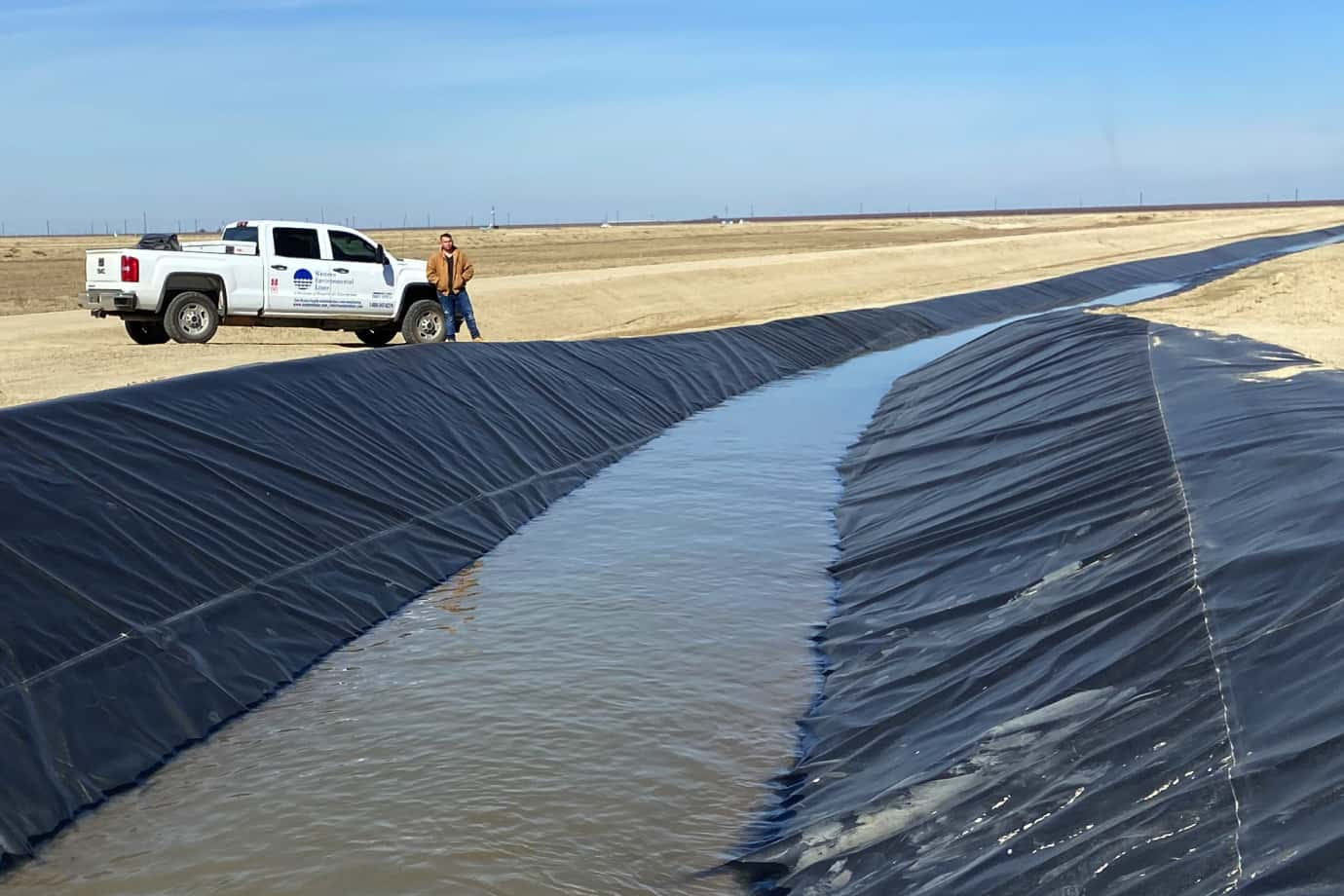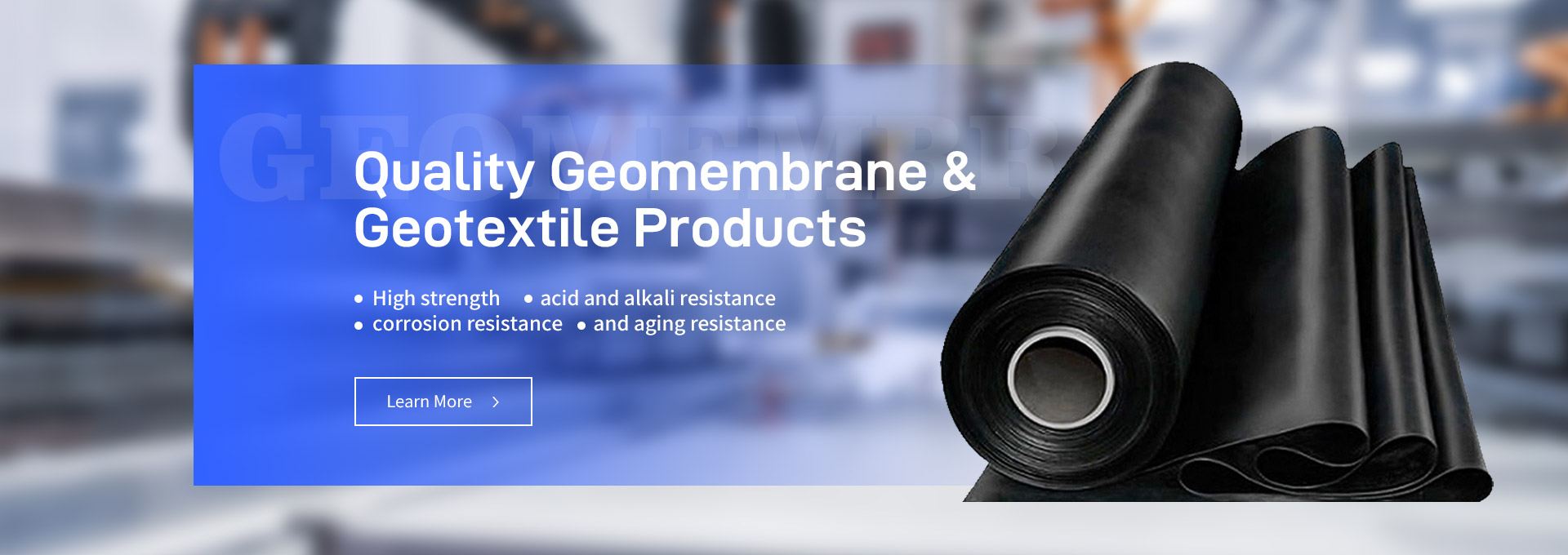In modern agriculture, the efficient use of water resources is crucial. Canal liners play a pivotal role as a water-saving solution, attracting increasing interest from farmers and agricultural managers. This article will explore the essential role of canal liners in water-saving agriculture, covering their principles, advantages, and practical applications to provide you with a comprehensive understanding.

What is a Canal Liner?
A canal liner, commonly known as a water storage pond geomembrane, is a waterproof material laid along the bottom and sides of irrigation channels. Its primary function is to prevent water leakage during transport, reducing water waste. Canal liners, produced by geomembrane manufacturers, are typically made of high-density polyethylene (HDPE), low-density polyethylene (LDPE), or other polymer materials known for their durability and weather resistance. These characteristics enable them to maintain stable performance in various weather conditions.
The Role of Canal Liners in Water-Saving Agriculture
1. Reducing Water Waste
The primary function of a canal liner is to prevent water leakage. Traditional irrigation channels without liners often lose significant amounts of water through soil seepage, particularly in areas with loose or highly permeable soils. By installing a water storage pond geomembrane, water loss can be effectively reduced, and the utilization rate of water resources is significantly increased, providing greater security in agricultural production, especially in arid and water-scarce regions.
2. Enhancing Water Supply for Crops
Stable water supply is crucial for healthy crop growth. The use of a canal liner ensures efficient water transport throughout the irrigation process, maintaining high water levels in the channel and meeting the water needs of crops, thus preventing yield reduction due to insufficient water supply.
3. Lowering Operational Costs
Water channel leakage not only represents water wastage but also adds extra irrigation costs, especially in systems using pumps or other mechanical equipment. Canal liners significantly reduce leakage, decrease the need for frequent water replenishment, save energy, and reduce pump operation costs, ultimately lowering overall agricultural operational expenses.
4. Reducing Soil Erosion
Unlined irrigation channels in prolonged use expose the soil directly to water flow, leading to soil erosion. Soil erosion not only affects the channel’s shape and stability but can also degrade soil quality. The use of geomembrane isolates water flow from the soil, preserves channel integrity, minimizes silt entry, and helps extend the service life of irrigation channels.
Material Choices and Advantages of Canal Liners
1. High-Density Polyethylene (HDPE) Liners
HDPE liners are noted for their excellent tensile strength, impact resistance, abrasion resistance, and corrosion resistance, making them suitable for a variety of soils and weather conditions. Their longevity and low maintenance requirements make HDPE a preferred water storage pond geomembrane choice in water-saving agriculture.
2. Low-Density Polyethylene (LDPE) Liners
LDPE liners are relatively soft and easy to install, especially suitable for small-scale irrigation channels and low-pressure applications. LDPE’s flexibility expands its use across different agricultural irrigation needs, allowing a more customized approach.
3. Other High-Performance Polymers
With advancements in technology, additional polymers such as polyvinyl chloride (PVC) and ethylene-vinyl acetate (EVA) are also being applied in agriculture. These materials broaden the choices among geomembrane manufacturers, allowing canal liners to better meet specific agricultural needs.
How to Install a Canal Liner?
Installing a canal liner is a professional task that requires precise measurements and custom fitting based on the shape and environmental conditions of the channel. The installation process generally includes the following steps:
1.Clearing the Channel Surface:
Ensuring no debris or sharp objects remain in the channel to prevent liner damage.
2.Laying the Canal Liner:
Spreading the water storage pond geomembrane evenly across the length and width of the channel.
3.Seam Sealing:
Using heat-welding or adhesives to seal seams tightly to prevent leaks.
4.Protective Layering:
In specific environments, a protective layer may be installed over the liner to protect it from wildlife damage or natural wear.
Practical Applications of Canal Liners
1. Applications in Arid Regions
In areas with scarce rainfall, water resources are extremely valuable. By installing canal liners in irrigation channels, local farmers can maximize limited water resources, significantly improving agricultural production stability and crop yields.
2. High-Efficiency Water-Saving Irrigation Projects
Many modern agricultural projects utilize canal liner technology, often in combination with drip irrigation and intelligent irrigation systems. This combination reduces water waste while increasing water resource utilization, supporting sustainable agriculture.
3. Greenhouse Farming Applications
In greenhouse farming, where groundwater seepage can impact the internal environment, canal liners are widely used on greenhouse floors and water channels. This application not only stabilizes water supply within greenhouses but also reduces dependency on groundwater, making greenhouse farming more environmentally friendly and water-saving.
Future Prospects: The Potential of Canal Liners in Agriculture
With increasing demand for water resources in agriculture and the emphasis on sustainable development, canal liner technology will continue to grow. Its application range will expand from traditional agriculture to smart agriculture and water resource management, providing more innovation and possibilities for water-saving in agriculture.
1. Development of Intelligent Liners
Technological advances are driving the emergence of smart materials. In the future, canal liners may include features like self-repair, anti-fouling, or automated monitoring, offering even greater security for water-saving agriculture.
2. Eco-Friendly Materials
Under stricter environmental regulations, eco-friendly water storage pond geomembrane materials will likely become mainstream. Biodegradable and reusable liners align with sustainable goals and can be safely used in agricultural environments without burdening soil or water bodies.
Through this information, we hope to clarify the crucial role of canal liners in water-saving agriculture. Canal liners, produced by innovative geomembrane manufacturers, can significantly improve water resource utilization, reduce agricultural production costs, and protect the environment. We hope that more agricultural professionals can adopt canal liners to contribute to the green development of agriculture.

